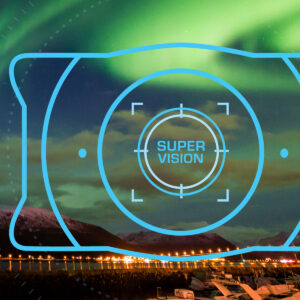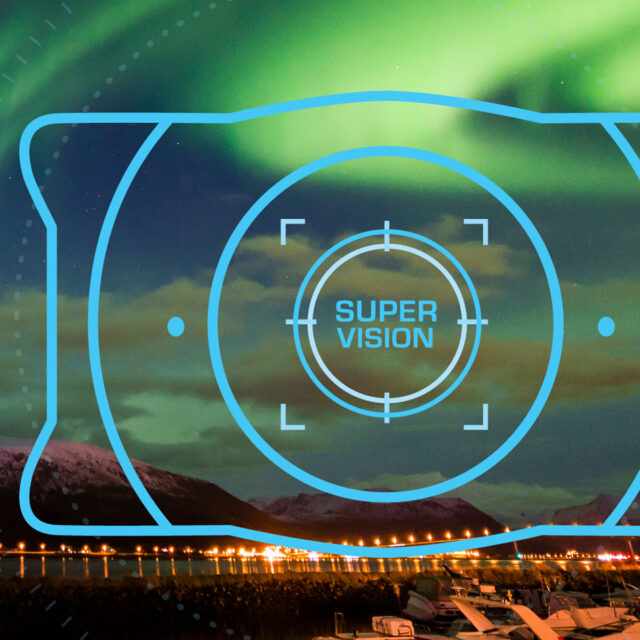Common eye problems usually include short-sightedness and astigmatism. Short-sightedness (also known as myopia) is a very common eye condition that causes distant objects to appear blurred while close objects can be seen clearly. Astigmatism is another common vision condition that causes blurred vision. It occurs when the cornea (the clear front cover of the eye) is irregularly shaped or sometimes because of the curvature of the lens inside the eye. These two conditions largely disturb daily life and activities. Wearing glasses to correct eyesight is needed, causing high degree of inconvenience while wearing contact lens, as alternative, can potentially lead to other complications e.g. dry eye and inflammation, especially in long-term use.
Implantable Collamer Lens or ICL is a new intraocular lens that can be implanted into the eye without removing the natural lens. This lens is an excellent choice for patients with short-sightedness (myopia), long-sightedness (hyperopia) and astigmatism. Since the ICL is implanted through a microscopic incision that requires no stitches, it does not alter the natural shape or health of the cornea. It is a low-risk and permanent solution while no maintenance is required. In addition, the lens cannot be felt while in the eye and can be removed if required.
Get to know ICL
Implantable Collamer Lens or ICL is a new intraocular lens that can be implanted into the eye without removing the natural lens. This lens is an option to treat wide range of eyesight conditions including short-sightedness (myopia), long-sightedness (hyperopia) and astigmatism. This lens is made from a material called Collamer, a collagen co-polymer that contains a small amount of purified collagen. It is stable and biocompatible and has been used for many years in the lenses implanted during eye surgery. The lens is small, foldable, soft, flexible and moist. It also contains an ultraviolet (UV) filter. The procedure can be a permanent one – or until patients decide to remove it. The ICL is specifically manufactured to correct individual vision and its strength is determined after a thorough series of measurements by expert ophthalmologists. Since the ICL is implanted through a microscopic incision that requires no stitches, it does not alter the natural shape or health of the cornea. It can remain inside the eye indefinitely. If the vision changes significantly, the lens can be removed.
Uniqueness of ICL
The ICL is made from Collamer, the combination between collagen and co-polymer which provides similar characteristics of cornea lens. It is stable with high degree of biocompatibility. Lens can be put permanently, unless removal is required. It also contains an ultraviolet (UV) filter, allowing less reflection with clearer vision. The ICL can treat both short-sightedness and astigmatism at the same time.
Suitable candidates for ICL
ICL surgery may be suitable for;
- Patients who have eyesight conditions including short-sightedness (myopia), long-sightedness (hyperopia) and astigmatism;
- Patients aged between 21-45 with stable vision;
- Patients who have considerably thin cornea;
- Patients who have dry eye;
- Patients who are not suitable for laser eye surgery such as LASIK
- Patients who do not have history of eye disease such as cataract, glaucoma or diabetic retinopathy.
- Patients who have never had any ophthalmic surgery
ICL Procedure
The procedure of ICL involves:
- Anesthetic eye drops are used to numb the eye before surgery begins.
- Patients lie down into a position in which your body is flat. Patients will be further instructed to look at the marked point.
- A small instrument will be placed between eyelids to prevent blinking. The customized lens is folded into a special injector. An ophthalmologist will make a small incision (sized 3-3.2 mm) in the cornea to insert the ICL. After the ICL is inserted inside the eye, the ICL will unfold and be positioned between iris and crystalline lens.
- The procedure takes only 20 to 30 minutes. The opening then seals on its own, usually without the need for stitches.
What to know about ICL
- In case that patients need to cough, sneeze or move during operation, patients must keep an ophthalmologist informed immediately.
- To correct only short-sightedness, it takes 2-3 weeks for lens preparation.
- To correct both short-sightedness and astigmatism, it takes 4-5 weeks for lens preparation.
Key benefits of ICL
- Since the lens is soft, therefore it does not cause irritation to the eyes;
- The lens is highly biocompatible to body tissue, resulting in less chances of immunological reactions;
- Lens does not affect corneal curvature;
- Lens does not damage cornea tissue;
- Sharp focus results in clearer vision during both daytime and night time;
- Lens can correct refractive errors, a problem with focusing light accurately onto the retina due to the shape of the eye;
- Lens does not cause dry eye since it does not affect cornea nerve fibers;
- Lens contains UV filters that help to minimize the chances of cataract in the future;
- It is an alternative for some patients who are not suitable for laser eye surgery such as LASIK because the cornea is not thick enough to be treated safely with laser eye surgery procedures;
- Clear vision can be obtained few hours after surgery;
- Since it is a day procedure thus no hospitalization is required; and
- The lens can be removed if required e.g. eyesight changes.
Possible risks of ICL
The risks are rare and often only minor if they occur. Possible risks or complications might include:
- Infection. After surgery, infection is extremely rare, reported 1 in 10,000 cases.
- Elevated intraocular pressure. Intraocular pressure might temporarily increases after surgery. Medicines that lower pressure in the eyes might be prescribed.
- Common reactions after surgery might include nasal congestion and eye irritation e.g. watery eyes and burning sensation in the eyes.
- A day after surgery, patients might experience red eyes with burning sensation and light sensitivity. These symptoms will automatically disappear within 7-14 days.
Implantable Collamer Lens or ICL is an effective and safe option to treat wide range of eyesight conditions including short-sightedness (myopia), long-sightedness (hyperopia) and astigmatism. The ICL is made from a collagen co-polymer that contains a small amount of purified collagen. It is highly stable and biocompatible, resulting in less immunological reactions. The lens can be implanted into the eye without removing the natural lens. It is suitable for patients who are not good candidates for laser eye surgery such as LASIK because the cornea is not thick enough to be treated safely with laser eye surgery procedure. In addition, lens can be removed if necessary e.g. eyesight changes. More importantly, to ensure the degree of safety, this procedure should be performed by experienced and well-trained ophthalmologist supported with advanced technology in the hospitals with international standards.










